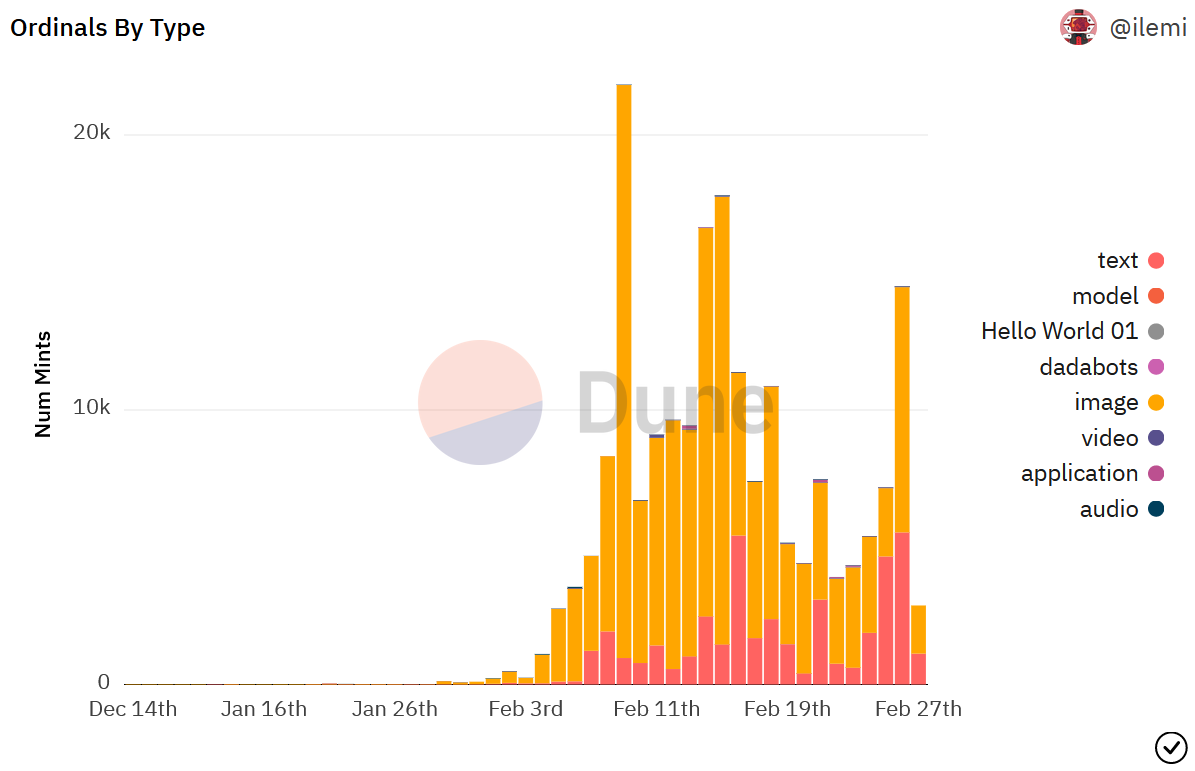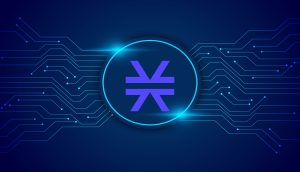For a very long time, Bitcoin’s use case as “digital cash or gold” was limited to storing and transferring value. Accordingly, developer activity on the world’s oldest blockchain network has fallen significantly behind that of smart contract platforms such as Ethereum, which is constantly being driven by new innovations such as DeFi or NFTs.
read too
However, in recent years this seems to be slowly changing with the emergence of Bitcoin derivative tokens and DeFi protocols such as Wrapped Bitcoin (WBTC), Stacks (STX) and Rootstock (RBTC). The latest development, which seems to be becoming more and more popular in the Bitcoin developer community and also among users, are so-called Bitcoin ordinal or NFTs on the Bitcoin blockchain. Show on-chain datathat around 200,000 BTC NFTs have been created since Ordinals launched on Jan. 21, including Ordinals Punks and Ordinals Penguins. These are bitcoin versions of popular NFT projects on Ethereum.

Ordinals use a new mechanism called Inscriptions, which, among other things, makes it possible to store text, images, videos and songs on the Bitcoin blockchain and make them tradable. How exactly this works, we look at below.
What are Bitcoin Ordinals?
A satoshi (sat) is the smallest unit into which a bitcoin can be divided: one BTC corresponds to 100,000,000 sats. The Ordinals log allows to send and receive sats. These can optionally also contain data. This data can be text, JPEG, audio or video. Adding such data to a satoshi is called inscription. These inscriptions are “written” on the Bitcoin blockchain. They are therefore very similar to conventional NFTs, which are not stored as an inscription but as a token on a blockchain.
It is important to note that ordinals are only possible thanks to the witness part of BTC transactions. These were introduced in 2017 by SegWit and expanded in 2021 by the Taproot soft fork.
read too

What is the difference between Ordinals and NFTs?
Ordinals Inscriptions are similar to normal NFTs, but mostly differ in the following three points:
1. The way NFTs and Ordinals are stored
Most NFTs are created through smart contracts. The motifs shown are usually hosted at a different location than the smart contract. Bitcoin ordinals, on the other hand, are written directly to the satoshis and are therefore stored on-chain by default. This means they are validated in blocks along with other transactions and stored directly on the BTC blockchain.
On the Ethereum blockchain, few NFT projects choose to store their data entirely on the blockchain, such as LarvaLabs’ Autoglyphs. Both the code that creates these works of art and the code that indicates ownership are stored on Ethereum.
Most NFT projects, on the other hand, are “incomplete” as they point to either centralized databases or off-chain content on decentralized storage systems like IPFS. In this regard, Bitcoin Ordinals are superior to most NFTs as they are more securely stored.
2. The Immutability of NFTs and Ordinals
The complete storage of NFT metadata on the blockchain also helps with the immutability of NFTs. NFTs that are stored on-chain by default (like the Bitcoin Ordinals) are not retrospectively modifiable by their creators.
With most Ethereum NFTs, however, this is often explicitly not wanted. This is because many NFT collections regularly ask their owners to update their metadata in order to update their NFTs with higher resolution images or other changes, among other things.
3. Bitcoin ordinals are less programmable than traditional NFTs
Another key difference is that ordinals have fewer features than NFTs on Ethereum or other smart contract platforms. This is because they cannot – or rather not yet – be combined with smart contracts. For example, on the Ethereum blockchain, many NFT projects have programmed their creators to receive a certain percentage of the sale price each time their NFT changes hands.
read too

Conclusion
In conclusion, both NFTs and BTC Ordinals have their pros and cons. NFTs offer a wider range of programming opportunities and an established community. They can represent more assets and are usually easier and quicker to create and trade than ordinals.
Bitcoin NFTs are less programmable than NFTs on Ethereum and therefore offer fewer opportunities for creating complex applications that combine NFTs with smart contracts. Also, the BTC-NFT infrastructure still lacks user-friendly trading venues through which ordinals can be traded on a large scale.
However, the major benefit of Bitcoin Ordinals is that they benefit from greater security and immutability by default since they are stored directly on the BTC blockchain.
Overall, the decision of whether to use NFTs or Bitcoin Ordinals comes down to individual needs and preferences. Both have their pros and cons, their own community, and can be good for different things.
Want to compare the best NFT marketplaces?
We show you the best NFT marketplaces in our BTC-ECHO comparison portal.
To the NFT marketplace comparison
The latest issues of BTC-ECHO Magazine
You might also be interested in this
